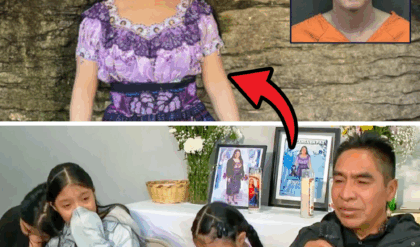This is one big Shire lore bomb.

Markella Kavenagh and Megan Richards in “The Lord of the Rings: The Rings of Power.” Credit: Courtesy of Prime Video
The Lord of the Rings: The Rings of Power‘s first season introduced us to the nomadic Hobbit ancestors known as the Harfoots. But in Season 2, episode 4, a new group of Hobbit ancestors join the party — and they’re bringing some major Hobbit lore with them.
These new ancestors are the Stoors, and unlike the nomadic Harfoots, they live in a village. Harfoots Nori Brandyfoot (Markella Kavenagh) and Poppy Proudfellow (Megan Richards) meet them after getting separated from the Stranger (Daniel Weyman) in the land of Rhûn.
Their first moments in the Stoor village get off to a rough start. Not only are Nori and Poppy confused by the very idea of Harfoots living in holes — “It doesn’t seem natural,” Poppy remarks — but Nori also makes the mistake of talking back to Stoor headwoman Gundabale Earthauler (Tanya Moodie). Luckily, though, it’s not long before the Harfoots and Stoors realize they have a lot in common.
The realization comes when Nori mentions Sadoc Burrows (Lenny Henry), the late Harfoot Trailfinder. Gundabale recognizes the name Burrows. Turns out, there’s an ancient legend about a Stoor named Burrows, who dreamed of “a place with endless streams of cold water, and rolling hills so soft, a family could dig a hole and live in it in less than a month.”
Sadoc’s ancestor called this paradise the Sûza-t — a word that will go on to quite literally mean the world for Hobbits.
What does Sûza-t mean in The Lord of the Rings: The Rings of Power?

Tanya Moodie in “The Lord of the Rings: The Rings of Power.” Credit: Ross Ferguson / Prime Video
Sûza-t means “the Shire” in Westron, the Common Speech of Middle-earth during the Third Age. If we’re splitting hairs, “Sûza” by itself means “Shire,” while the “t” at the end creates the definite form.
If we’re splitting more hairs, Westron in the form it takes in J.R.R. Tolkien’s legendarium likely wouldn’t be around by this point in The Rings of Power‘s timeline, as it developed when Númenoreans began trading with the Men of Middle-earth. The interactions between the Númenoreans and Middle-earth Men have only just started in the show, so there’s quite a bit of time for Westron to grow. Still, The Rings of Power is operating with its own timeline and its own version of a common language, so we can just assume it’s a kind of proto-Westron (or Adûnaic, a precursor to Westron).
Language tangent aside — and I think language nerd Tolkien would excuse any language-related tangent — the appearance of the word Sûza-t in The Rings of Power means that, by the show’s canon, a Hobbit ancestor was dreaming of the Shire thousands of years before the Hobbits actually settled it. In fact, Burrows’ dream prompted him to lead an expedition out into the world to find the Sûza-t. No one has heard from him, or his mission, since. It’s likely, then, that the expedition gradually morphed into the Harfoots’ traveling group.
Gundabale wonders whether Nori and Poppy were sent from the Harfoots to lead them to the Sûza-t, to which Nori sadly replies, “We don’t have a home.”
And it seems like the Stoors’ home doesn’t have much staying power left. The Dark Wizard (Ciarán Hinds) and his Gaudrim are just a few muscle cars away from turning Rhûn into a Mad Max-style wasteland. And while the land may once have been green, as Tom Bombadil (Rory Kinnear) tells the Stranger this episode, it’s only grown more inhospitable and dry — perhaps not just because of time, but also because of the rising darkness in Middle-earth. How long until the Stoors are forced to leave their home and strike out for greener pastures? Will they be joining up with the Harfoots in future seasons of The Rings of Power?
And maybe most pressingly: Will The Rings of Power show us the Hobbits settling the Shire? In Tolkien’s work, this doesn’t happen until later in the Third Age, and there’s quite a bit of Hobbit history between Nori’s storyline and now. However, since The Rings of Power is seriously condensing Tolkien’s timeline, I wouldn’t rule it out.





